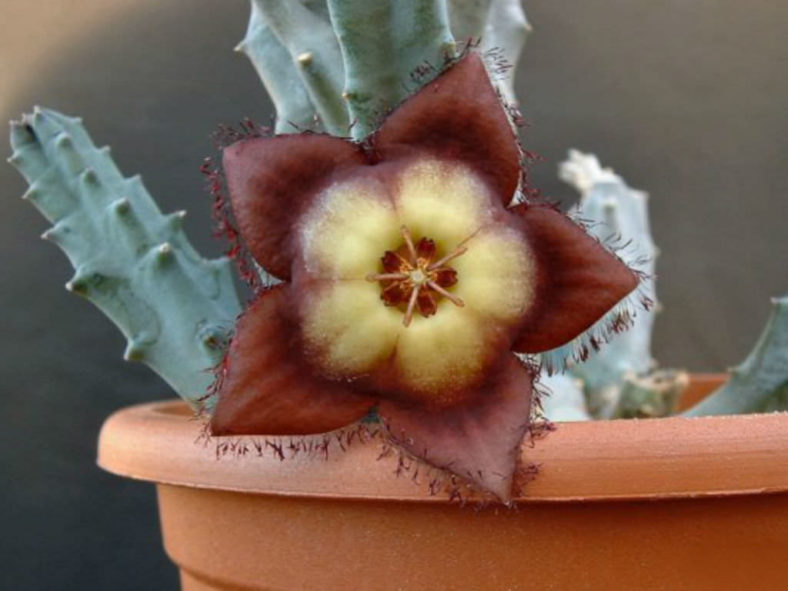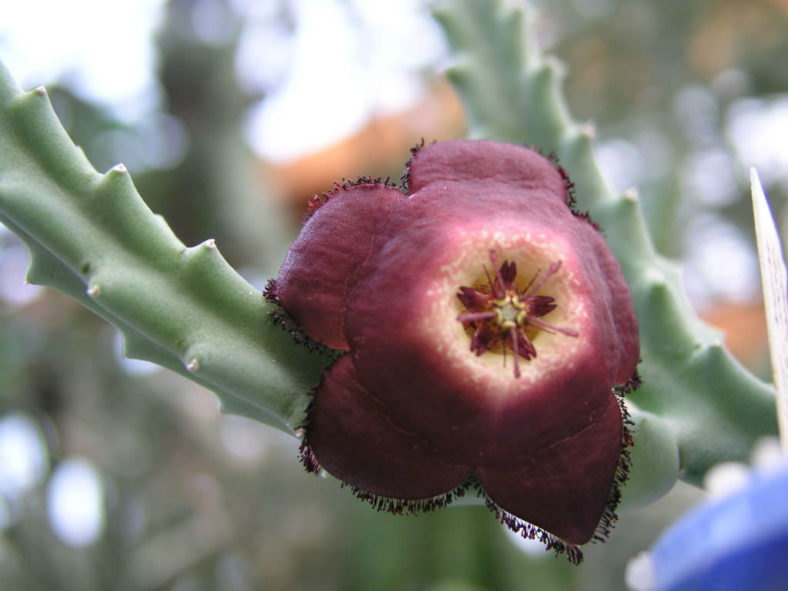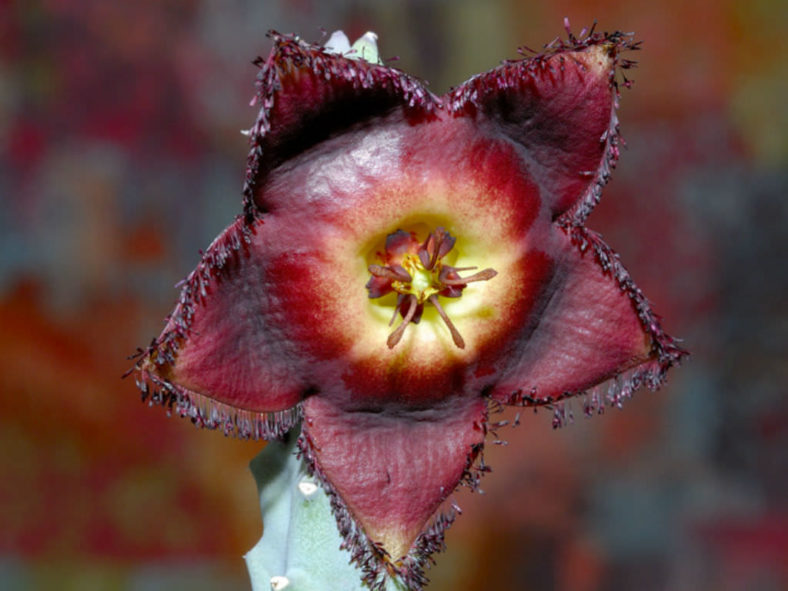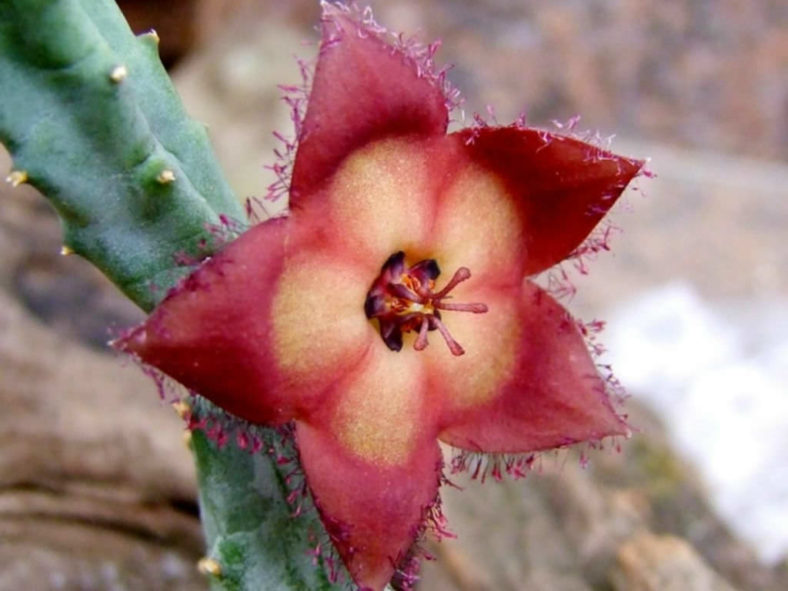Scientific Name
Tromotriche revoluta (Masson) Haw.
Common Name(s)
Revolute-flowered Tromotriche
Synonym(s)
Ceropegia revoluta, Stapelia revoluta, Stisseria revoluta
Scientific Classification
Family: Apocynaceae
Subfamily: Asclepiadoideae
Tribe: Ceropegieae
Subtribe: Stapeliinae
Genus: Tromotriche
Origin
Tromotriche revoluta is native to South Africa. It occurs from south of Namaqualand in the Northern Cape to near Clanwilliam and Lutzville in the Western Cape province.
Description
Tromotriche revoluta, formerly known as Stapelia revoluta, is a succulent plant with grey-green, sparingly branched, acutely 4-angled stems with small, sharply pointed teeth on the angles. It spreads underground via rhizomes, reaching a diameter of 3.3 feet (1 m). The stems grow up to 18 inches (45 cm) long and 1.2 inches (3 cm) thick, initially erect, becoming decumbent with age.
Inflorescences with up to three flowers developing successively emerge from the sides of the upper parts of the stems in fall. The five-lobed corolla is up to 1.5 inches (3.8 cm) in diameter. It is smooth on both surfaces, with dull purple or purple-brown, strongly recurved lobes, pale greenish-yellow or cream-colored central area, and has long, vibratile, club-shaped hairs along the margins of lobes. The corona has five spreading outer lobes that are purple-brown with a yellowish base and narrower, erect, two-horned inner lobes that are paler with yellowish and pale purple-brown parts.

Hardiness
USDA hardiness zone 9a to 11b: from 25 °F (−3.9 °C) to 50 °F (+10 °C).
How to Grow and Care
Stapeliads are relatively easy to grow. However, they should be treated as outdoor plants as they will easily rot indoors and cannot flower without exposure to outdoor temperature fluctuations. They should be grown under cover so that watering can be controlled. They require a reasonable amount of sunlight to promote flowering and maintain a well-shaped plant. Very shady positions will produce very poor flowering. Stapeliads come from climates with extremely high temperatures in the summer months, so most growth is in spring and autumn, with flowering in autumn when the weather cools down. Water in moderation when needed in the growing season, ensuring the soil is fairly dried out between waterings. Do not water between November 1 and March 1.
The easiest and best way to propagate Stapeliads is by cuttings taken virtually throughout the year. Seed is also a method of propagation.
See more at How to Grow and Care for Stapeliads.
Varieties
Links
- Back to genus Tromotriche
- Succupedia: Browse succulents by Scientific Name, Common Name, Genus, Family, USDA Hardiness Zone, Origin, or cacti by Genus
Photo Gallery
Click on a photo to see a larger version.



